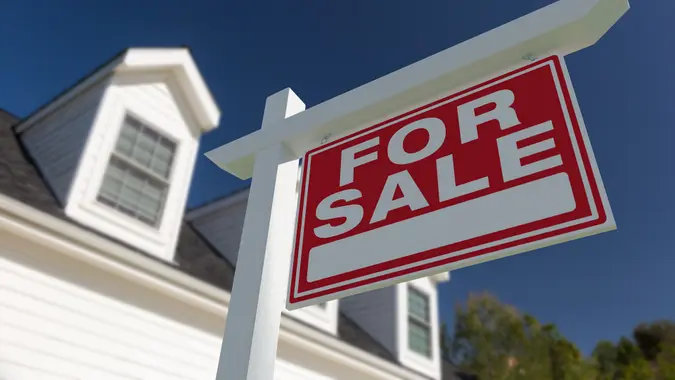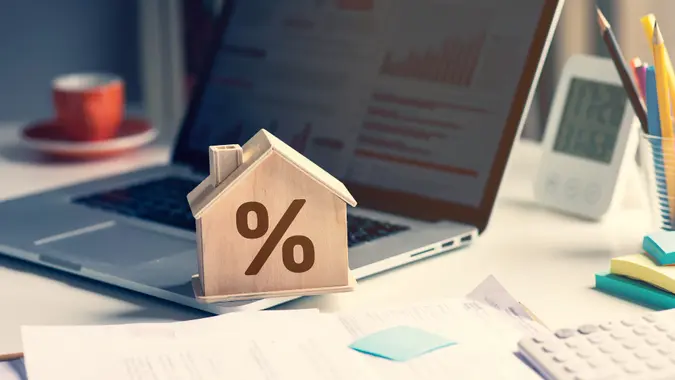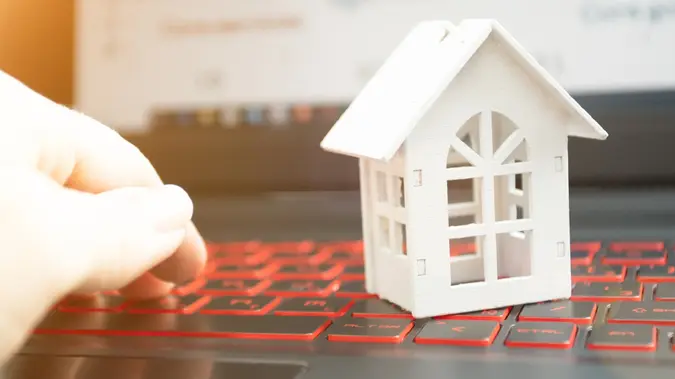What Is a Balloon Payment? A Simple Guide to This Loan Feature

Commitment to Our Readers
GOBankingRates' editorial team is committed to bringing you unbiased reviews and information. We use data-driven methodologies to evaluate financial products and services - our reviews and ratings are not influenced by advertisers. You can read more about our editorial guidelines and our products and services review methodology.

20 Years
Helping You Live Richer

Reviewed
by Experts

Trusted by
Millions of Readers
When you start looking at loans, all the different options can be confusing. A balloon mortgage is a specific type of home loan that requires you to make a large payment — hence, the name “balloon” — after a relatively short period of time. However, balloon payments can come with other types of loans, too, including business and auto loans.
Don’t be left out in the cold when your balloon payment comes due — make saving to pay it off part of your financial plan. Keep reading to learn everything you need to know if you’re facing a balloon payment, including what options you have regarding how to make this payment.
Understanding Balloon Payments
A balloon payment is a payment at the end of a loan term that is “larger than usual,” according to the Consumer Financial Protection Bureau. The payments during the first years of this type of loan are lower, and they are followed by a single, large payment due at the end of the loan. The balloon payment typically pays off the loan.
A balloon mortgage‘s monthly payments, like a traditional mortgage’s, are based on the principal and interest’s amortization over 30 years. After a shorter period of time, however — typically five to seven years — the remaining, unpaid, principal balance is payable in full.
In other words, these loans have a 30-year amortization schedule with a balloon payment after five to seven years. Some balloon mortgages have a reset feature: When the loan term ends and the balloon payment is due, you can reset the loan to its original terms. Keep in mind, however, that you’ll still have another balloon payment due in five to seven years.
How Balloon Payments Work
When your balloon payment is due, you have two choices to pay it off: You can take out another loan for the amount of the balloon payment or you can sell your home/asset and use the proceeds to pay it off.
If you take out another loan, you will need to apply — and qualify — for one that is at least equal to the amount of your balloon payment. If this is a home mortgage, points and closing costs might be associated with the mortgage you get, and your new amortization schedule will likely be over 30 years, so you’ll be essentially starting over.
If you sell your home to make the balloon payment, start the process early. It could take several months to sell your place, and you will have to find a new home, too. In addition, you’ll need to save enough money for a down payment on a new home.
Pros and Cons of Balloon Payments
Here’s a look at the pros and cons of balloon payments:
| Pros | Cons |
| Lower monthly payments | Large final payment can be difficult to afford |
| Can free up cash flow | Risk of refinancing at a higher rate |
| Useful for short-term loans | May lead to financial strain if not planned properly |
| Good for businesses with future income growth | If unable to pay, borrower may lose the asset |
Types of Loans That May Include a Balloon Payment
There are multiple types of loans that can include a balloon payment. These include:
- Balloon mortgages: Common in commercial real estate and certain home loans; typically require refinancing or selling the property before the final payment.
- Auto loans with balloon payments: Lower monthly payments but large final payment due; may require refinancing or trading in the vehicle.
- Business loans: Often used for short-term capital needs; businesses plan to pay the balloon amount with future earnings or refinancing.
Alternatives to Balloon Payment Loans
While there are advantages to balloon payments — especially if you don’t have the income to sustain a high monthly payment — there are drawbacks too, such as the risk of refinancing at a higher rate or the risk of losing your asset. Making that big balloon payment down the line can be difficult for many people.
As such, here are some alternatives to balloon payment loans:
- Traditional loans with fixed payments: These come with higher monthly payments but no large final payment.
- Adjustable-rate loans: The monthly payments could change, if the interest rate does, but you still avoid a large final payment.
Final Thoughts: Should You Choose a Loan With a Balloon Payment?
A balloon payment carries risks that other types of payment plans don’t.
With a balloon mortgage, your property value could fall, your financial situation could deteriorate or you might not be able to sell your home or refinance your mortgage before the balloon payment comes due. Make every mortgage payment on time and keep your credit score high to reduce the risk that you won’t qualify for a new mortgage when your balloon payment is on the horizon.
The interest rate could also rise during your loan term, which means you’d have to refinance at a higher rate to make the balloon payment. So when low interest rates are available, a fixed-rate loan is probably your best bet. If you are certain your income will rise significantly over the next few years, you can get an adjustable-rate loan that converts to a fixed-rate down the line.
If you have a loan with a balloon payment, have a plan for making the payment. Understand what your options are, and start the process early to refinance or sell your asset. These types of loan payments can work for some people — particularly if you know you’ll have the money for that final lump sum — but it’s smart to explore all your loan options before deciding which one is best for you.
FAQ
- Can I refinance a loan with a balloon payment?
- Yes, and this would replace your loan with a new one. However, it's not always easy to qualify for a refinance, so it may largely depend on your financial situation.
- What happens if I can’t afford the balloon payment?
- You could default on the loan, which can damage your credit score and cause you to lose the asset.
- Are balloon payments common in mortgages?
- No. They are more prevalent in commercial real estate, but in general the risks that come with balloon payments usually have borrowers choosing more traditional loan payments instead.
- Is a balloon payment loan better than a traditional loan?
- It depends on your financial situation. In general, it can be useful for short-term loans and businesses who anticipate future income growth. However, it poses significant risks if you can't afford to refinance or make the balloon payment, which is why most homeowners choose traditional mortgages.
 Written by
Written by  Edited by
Edited by 
























